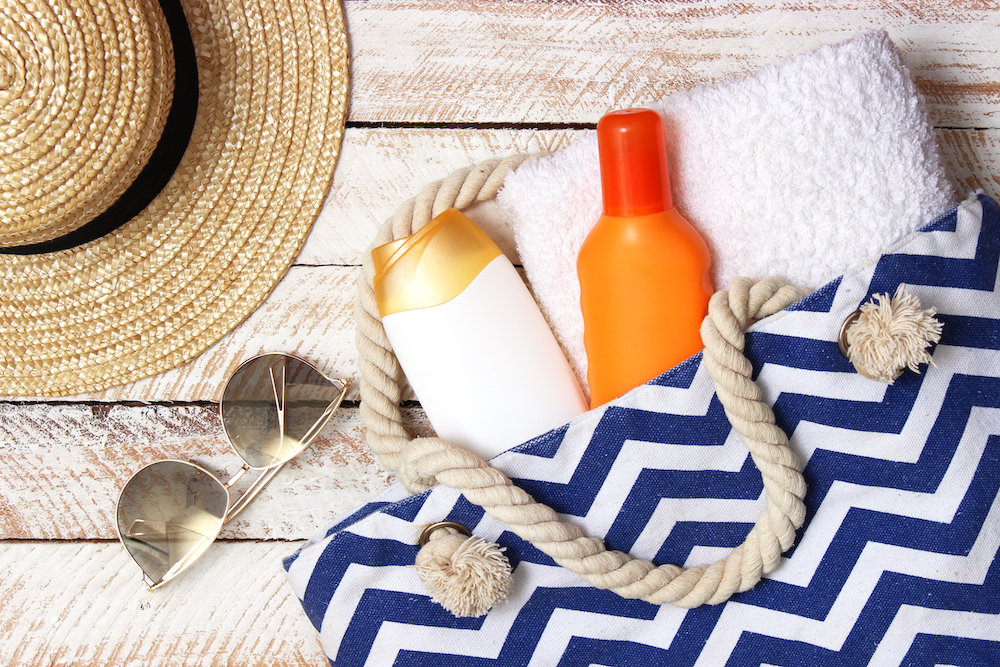LITTLE ROCK — As summer temperatures heat up and Arkansans enjoy the Natural State’s many hiking trails, swimming holes and state parks, it’s important to practice sun safety by using and reapplying sunscreen and avoiding prolonged sun exposure during the hottest parts of the day.
Skin cancer is the most common type of cancer, and it’s the biggest long-term risk of sun exposure. According to the U.S. Centers for Disease Control and Prevention, approximately 5 million adults are treated for skin cancer each year.
To avoid sunburn and skin cancer, Bryan Mader, extension assistant professor and health specialist for the University of Arkansas System Division of Agriculture, said it’s important to protect skin against both UV-A and UV-B rays. Both types of ultraviolet rays damage skin and cause skin cancer, though UV-B rays have more energy and are a more dangerous type of UV light.

Picking the right protection
Mader said there are two main types of sunscreens. Broad spectrum sunscreen provides protection against both UV-A and UV-B rays, while higher value SPF sunscreens provide protection against sunburn caused by UV-B radiation. The SPF value, or Sun Protection Factor, indicates a sunscreen’s UV-B protection.
“There is a popular misconception that SPF relates to time of solar exposure,” Mader said. “However, SPF is not directly related to the time of solar exposure but rather the amountof solar exposure. Since the strongest UV rays occur in the middle of the day, as compared to early morning or early evening hours, your risk of sun exposure, and therefore sunburn, is higher at midday — usually between 10 a.m. and 3 p.m.”
Sunscreen should be applied at least 15 minutes before going outside, and one should use enough to cover the entire face and body, including the ears, hands, tops of the feet and along the hairline.
Mader said sunscreen should be reapplied at least every two hours and more frequently if the user is swimming or sweating. Check the bottle of sunscreen for specific directions on when to reapply.
Like other products, sunscreens have an expiration date, and it’s important to check this before applying. “Sunscreen that has expired does become less effective and may not protect you from UV rays, depending on sun exposure time,” Mader said.
Be extra sun-cautious with infants or if near water
Mader said that sunscreen is not recommended for infants. The Food and Drug Administration recommends that infants be kept out of the sun between 10 a.m.-3 p.m., and that they wear protective clothing — which blocks against UV-A and UV-B rays — if they have to be in the sun. Mader said parents should consult their pediatrician regarding sunscreen on infants.
Just like adults, children should have their sunscreen reapplied at least every two hours.
It’s important to be especially vigilant about sunscreen use and reapplication when near light-colored surfaces, such as water, concrete, snow and sand, as these can reflect UV rays and increase sun exposure.
“Everyone should be aware that sunscreen is not ‘waterproof,’ despite the labels, and it does eventually wash off in water or through sweating,” Mader said. “If you are on or near the water, consider using a higher SPF sunscreen — at least 50+ — to provide additional protection from UV rays.”
Mader said no sunscreen provides complete protection from the sun, so it’s critical to use additional forms of sun protection as well. This includes sunglasses with a UV protection factor; wide-brimmed hats that cover the ears, neck and top of the head – unlike a visor or baseball cap, which leaves some of these areas unprotected; and tightly-woven clothing that covers the arms and legs.
Some clothing is also made specifically with an Ultraviolet Protection Factor, or UPF. This indicates how much UV radiation can reach the skin. According to the Skin Cancer Foundation, a garment with a UPF of 30-39 offers “very good” protection, and a UPF of 50 and up rates as “excellent” protection.
Burn care
Mader said most sunburns can be treated at home with aspirin, acetaminophen or ibuprofen to relieve pain and reduce swelling. Use a topical moisturizer or aloe vera to provide additional relief, or soothe burns with cool water or cool, wet cloths. Avoid sun exposure until the sunburn is completely healed.
“Depending on the severity of the sunburn — if the burn covers more than 15 percent of your body, you are dehydrated, have a high fever or are in extreme pain for more than 48 hours — a visit to the doctor may be required to ensure there is no serious skin damage,” Mader said.
For more information about sun safety and summer skincare, visit the Cooperative Extension Service’s Sun Safety page, or check out the Division of Agriculture’s YouTube channel for a video on Sun Safety in Arkansas.
To learn about extension programs in Arkansas, contact your local Cooperative Extension Service agent or visit www.uaex.uada.edu. Follow us on Twitter and Instagram at @AR_Extension. To learn more about Division of Agriculture research, visit the Arkansas Agricultural Experiment Station website: https://aaes.uada.edu. Follow on Twitter at @ArkAgResearch. To learn more about the Division of Agriculture, visit https://uada.edu/. Follow us on Twitter at @AgInArk.


